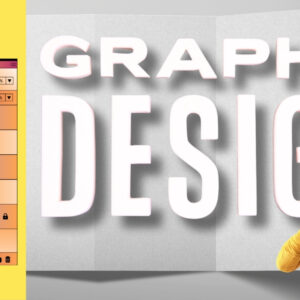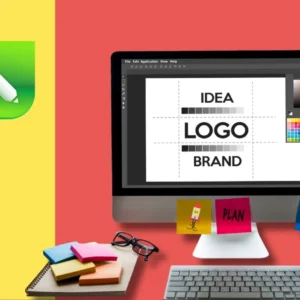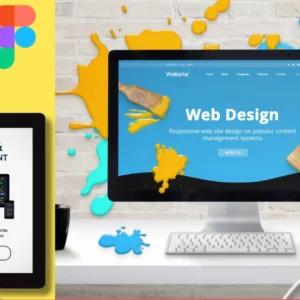
Have you ever wondered how designers create those crisp, scalable logos and graphics that look perfect at any size? The secret weapon behind most professional vector artwork is Adobe Illustrator. While it might seem intimidating at first, learning this powerful software can transform your design capabilities completely.
Adobe Illustrator is the industry standard for creating vector graphics, illustrations, logos, and scalable artwork. Unlike photos made of pixels, vector graphics are made of mathematical paths that can be scaled to any size without losing quality. This makes Illustrator perfect for everything from business cards to billboards.
Don’t worry if you’ve never used professional design software before. This guide will walk you through everything you need to know to start creating beautiful vector artwork. We’ll cover the basics first, then gradually build up to more advanced techniques that will have you designing like a pro.
What Makes Adobe Illustrator Special?
Adobe Illustrator creates vector graphics using mathematical formulas rather than pixels. This means your artwork can be scaled infinitely without becoming blurry or pixelated. A logo created in Illustrator will look crisp whether it’s printed on a business card or displayed on a billboard.
This scalability makes Illustrator essential for:
- Logo design and branding
- Icon creation
- Print materials like brochures and posters
- Web graphics and illustrations
- Typography and lettering
- Technical drawings and diagrams
The software has been the industry standard for over 30 years, which means most design professionals know it well, and there’s a wealth of resources available for learning.
Getting Started: The Illustrator Interface
When you first open Illustrator, the interface might seem overwhelming. But once you understand the basic layout, you’ll find it’s actually quite logical.
The Workspace
The main workspace consists of several key areas:
The Artboard is your canvas – the white area where you’ll create your artwork. You can have multiple artboards in one document, which is useful for creating variations or multiple designs.
The Toolbar on the left contains all the tools you’ll use to create and edit your artwork. These tools are organized logically, with selection tools at the top and drawing tools below.
Panels on the right provide additional controls and options. The most important panels for beginners are Layers, Color, and Properties.
The Menu Bar at the top gives you access to all of Illustrator’s features and commands.
Essential Tools for Beginners
Start by learning these fundamental tools:
Selection Tool (V) – The black arrow that lets you select and move objects. This is probably the tool you’ll use most often.
Direct Selection Tool (A) – The white arrow that lets you select individual anchor points and edit paths.
Pen Tool (P) – Creates precise paths and shapes. This tool has a learning curve but is essential for custom illustrations.
Shape Tools – Rectangle, Ellipse, and other basic shapes. These are perfect for beginners and surprisingly versatile.
Type Tool (T) – Adds text to your artwork. Illustrator has powerful typography features that go far beyond basic text.
Zoom Tool (Z) – Magnifies your artwork so you can work on details.
Understanding Vector Graphics
Before diving into techniques, it’s important to understand how vector graphics work. Unlike raster images made of pixels, vectors are made of paths defined by anchor points and curves.
Anchor Points and Paths
Every vector shape is made of paths connecting anchor points. Think of anchor points as dots connected by lines or curves. You can add, remove, or move these points to change the shape.
There are two types of anchor points:
- Corner points create sharp angles
- Smooth points create curves
Understanding this concept is crucial because it affects how you create and edit shapes in Illustrator.
Bezier Curves
The curves between anchor points are called Bezier curves. They’re controlled by “handles” that extend from anchor points. Moving these handles changes the curve’s shape and direction.
Don’t worry if this sounds technical – you’ll understand it better through practice than explanation.
Creating Your First Artwork
Let’s start with a simple project to get you comfortable with the basics.
Setting Up a New Document
When you create a new document, you’ll choose:
- Size – Pick a preset or enter custom dimensions
- Color Mode – RGB for digital work, CMYK for print
- Resolution – This matters less for vectors than raster images
For your first project, try creating a document that’s 8.5″ x 11″ in RGB mode.
Drawing Basic Shapes
Start with the shape tools. Click and drag to create rectangles, circles, and other basic shapes. Hold Shift while dragging to constrain proportions (perfect squares or circles).
Try creating a simple house using:
- Rectangle for the base
- Triangle for the roof
- Smaller rectangles for windows and doors
- Circle for the sun
This exercise teaches you shape creation and basic selection techniques.
Working with Color
Select a shape and look at the color controls. You’ll see two squares representing Fill (inside color) and Stroke (outline color). Click on these to change colors.
The Color panel lets you choose colors using sliders or enter specific values. The Swatches panel provides pre-made colors and patterns.
Adding Text
Select the Type tool and click on your artboard to add text. You can change fonts, sizes, and colors just like in a word processor, but with much more control.
Try adding a title to your house illustration and experiment with different fonts and sizes.
Essential Techniques for Beginners
Once you’re comfortable with basic shapes and text, these techniques will expand your capabilities significantly.
Using the Pen Tool
The Pen tool creates custom paths and is essential for illustrations. It takes practice, but start with these basics:
- Click to create straight line segments
- Click and drag to create curves
- Hold Alt while dragging to create different curve types
- Press Escape to end the current path
Practice by tracing simple shapes or letters. Many designers spend considerable time mastering this tool because it’s so powerful.
Working with Layers
Layers help organize your artwork. Think of them as transparent sheets stacked on top of each other. You can hide, lock, or rearrange layers without affecting your artwork.
Create new layers for different elements of your design. For example, put your background on one layer, main illustration on another, and text on a third.
Grouping and Organizing
Select multiple objects and press Ctrl+G (Cmd+G on Mac) to group them. Grouped objects move together and can be edited as a unit. This is essential for keeping complex artwork organized.
Using Guides and Grids
Guides help align objects precisely. Create guides by dragging from the rulers, or use the grid for regular spacing. These invisible helpers make your artwork look more professional.
Color and Gradients
Color is one of Illustrator’s strongest features. Beyond basic fill colors, you can create sophisticated color schemes and effects.
Understanding Color Modes
- RGB – Red, Green, Blue. Used for digital displays
- CMYK – Cyan, Magenta, Yellow, Key (black). Used for printing
- HSB – Hue, Saturation, Brightness. Often easier for choosing colors
Choose the right color mode for your intended output from the beginning.
Creating Color Schemes
The Color Guide panel suggests harmonious color combinations based on your selected color. This is helpful when you’re not sure which colors work well together.
You can also create custom color swatches for brand colors or frequently used colors in your project.
Working with Gradients
Gradients create smooth color transitions. Select an object and choose a gradient from the Swatches panel, or create your own using the Gradient panel.
You can adjust gradient colors, direction, and smoothness. Linear gradients go in straight lines, while radial gradients radiate from a center point.
Typography in Illustrator
Illustrator offers professional typography features that go far beyond basic text editing.
Character and Paragraph Formatting
The Character panel controls individual letter properties like font, size, and spacing. The Paragraph panel controls text alignment, indentation, and spacing between paragraphs.
Working with Fonts
Choose fonts that match your design’s personality. Serif fonts feel traditional and formal, while sans-serif fonts feel modern and clean. Display fonts are great for headlines but poor for body text.
Text on Paths
One of Illustrator’s unique features is the ability to place text along any path. Create a path with the Pen tool, then use the Type on Path tool to add text that follows the path’s curve.
Converting Text to Outlines
Sometimes you need to convert text to vector shapes. This is useful when you need to modify letter shapes or ensure fonts display correctly on other computers.
Select your text and go to Type > Create Outlines. The text becomes editable vector shapes but can no longer be edited as text.
Working with Images
While Illustrator is primarily for vector graphics, you can incorporate raster images too.
Placing Images
Use File > Place to import photos or other images. You can resize and position them, but remember that enlarging raster images will reduce quality.
Image Tracing
Illustrator can convert raster images to vectors using the Image Trace feature. This works well for simple graphics with clear edges but poorly for complex photos.
Select a placed image and click the Image Trace button in the Properties panel. Adjust the settings to get the best result.
Clipping Masks
Use clipping masks to hide parts of images or artwork. Create a shape, place it above the image, select both, and go to Object > Clipping Mask > Make. The image will only show through the shape.
Organizing Your Workflow
Good organization makes complex projects manageable and helps you work more efficiently.
File Management
Save your work frequently and use meaningful filenames. Consider creating a folder structure for different projects and file versions.
Save as .ai files for continued editing, but also export to other formats like PDF, PNG, or SVG for sharing or web use.
Using Templates
Create templates for frequently used layouts. This saves time and ensures consistency across similar projects.
Keyboard Shortcuts
Learn essential shortcuts to speed up your work:
- V (Selection tool)
- A (Direct Selection tool)
- P (Pen tool)
- T (Type tool)
- Ctrl+Z (Undo)
- Ctrl+C (Copy)
- Ctrl+V (Paste)
Common Beginner Mistakes
Avoid these common pitfalls that can slow your progress or create problems later.
Overcomplicating Simple Tasks
Beginners often use complex tools for simple tasks. If you need a circle, use the Ellipse tool rather than trying to draw one with the Pen tool.
Not Using Layers
Putting everything on one layer makes editing difficult. Use layers from the beginning to keep your artwork organized.
Ignoring Anchor Points
Too many unnecessary anchor points make shapes harder to edit and can cause printing problems. Use as few points as possible to create smooth, clean shapes.
Not Saving Regularly
Illustrator is generally stable, but crashes can happen. Save your work frequently to avoid losing progress.
Wrong Color Mode
Using RGB when you need CMYK (or vice versa) can cause color problems later. Choose the right color mode from the start.
Exporting Your Work
Creating great artwork is only part of the process – you also need to export it properly for its intended use.
For Print
Export as PDF for professional printing. This preserves vectors and ensures colors print correctly. Use high-quality settings and include bleed if required.
For Web
Export as SVG for scalable web graphics, PNG for images with transparency, or JPEG for photos. Use the Export for Screens feature to create multiple sizes at once.
For Logos
Save logos in multiple formats: AI for editing, EPS for professional use, PDF for general sharing, and PNG for web use.
Building Your Skills
Improving your Illustrator skills takes practice and patience. Here are ways to accelerate your learning.
Practice Regularly
Set aside time for regular practice. Even 15-30 minutes daily will build your skills faster than occasional long sessions.
Follow Tutorials
There are countless Illustrator tutorials online. Start with beginner tutorials and gradually work up to more advanced techniques.
Analyze Existing Artwork
Look at vector artwork you admire and try to figure out how it was created. This reverse-engineering helps you understand different techniques.
Join Communities
Online communities like Reddit’s r/AdobeIllustrator or design forums provide help, inspiration, and feedback on your work.
Take on Real Projects
Practice projects are good, but real projects with actual requirements and deadlines teach you more about practical application.
Advanced Features to Explore Later
Once you’re comfortable with the basics, these features will expand your creative possibilities.
Pathfinder Tools
These tools combine shapes in various ways – uniting them, subtracting one from another, or creating intersections. They’re essential for complex shape creation.
Blend Tool
Creates smooth transitions between objects, useful for creating gradients with objects or morphing one shape into another.
Symbols
Save frequently used elements as symbols. This makes them easy to reuse and keeps file sizes smaller.
Brushes
Illustrator includes various brush types for creating artistic effects. You can also create custom brushes for specific needs.
3D Effects
Basic 3D effects can add depth to your artwork. While not as sophisticated as dedicated 3D software, they’re useful for simple dimensional effects.
Troubleshooting Common Issues
When things go wrong, these solutions can help you get back on track.
Slow Performance
Large, complex files can slow Illustrator down. Try reducing the number of anchor points, simplifying complex shapes, or working in Outline mode.
Missing Fonts
If you open a file with missing fonts, Illustrator will substitute them. Keep a collection of commonly used fonts, or convert text to outlines before sharing files.
Color Problems
If colors look different than expected, check your color mode and monitor calibration. Also ensure you’re using the right color profile for your output.
Unexpected Behavior
When tools don’t work as expected, check if you have objects selected or if you’re in the wrong mode. The Escape key often returns tools to their default behavior.
Staying Updated
Adobe regularly updates Illustrator with new features and improvements. Stay current to take advantage of new capabilities and bug fixes.
Learning New Features
When updates include new features, take time to learn them. Many updates include time-saving improvements that can enhance your workflow.
Compatibility Considerations
Newer file formats might not open in older versions of Illustrator. Consider this when sharing files with others.
Conclusion
Adobe Illustrator is a powerful tool that opens up endless creative possibilities. While it has a learning curve, the fundamentals covered in this guide will give you a solid foundation to build upon.
Remember that becoming proficient takes time and practice. Don’t get discouraged if things feel difficult at first – every professional designer started as a beginner. Focus on mastering the basic tools and techniques before moving on to advanced features.
The key to success with Illustrator is regular practice and patience with yourself. Start with simple projects and gradually take on more complex challenges. Each project will teach you something new and build your confidence.
Most importantly, have fun with the process. Illustrator is an incredibly powerful creative tool, and learning to use it well will open up new possibilities for your design work. Whether you’re creating logos, illustrations, or complex graphics, these skills will serve you well throughout your design journey.
Keep experimenting, stay curious, and don’t be afraid to try new techniques. The more you use Illustrator, the more natural it will become, and soon you’ll be creating professional-quality vector artwork with confidence. To learn more about graphic designing practically join our institute YourPaathshaala in raipur or contact us at 8305209520








What is Adobe Illustrator for beginners?- graphicdesigningcourseinraipur.in
apwenechjx
pwenechjx http://www.g03690i7un1drs95t47r0iqsre9654ups.org/
[url=http://www.g03690i7un1drs95t47r0iqsre9654ups.org/]upwenechjx[/url]